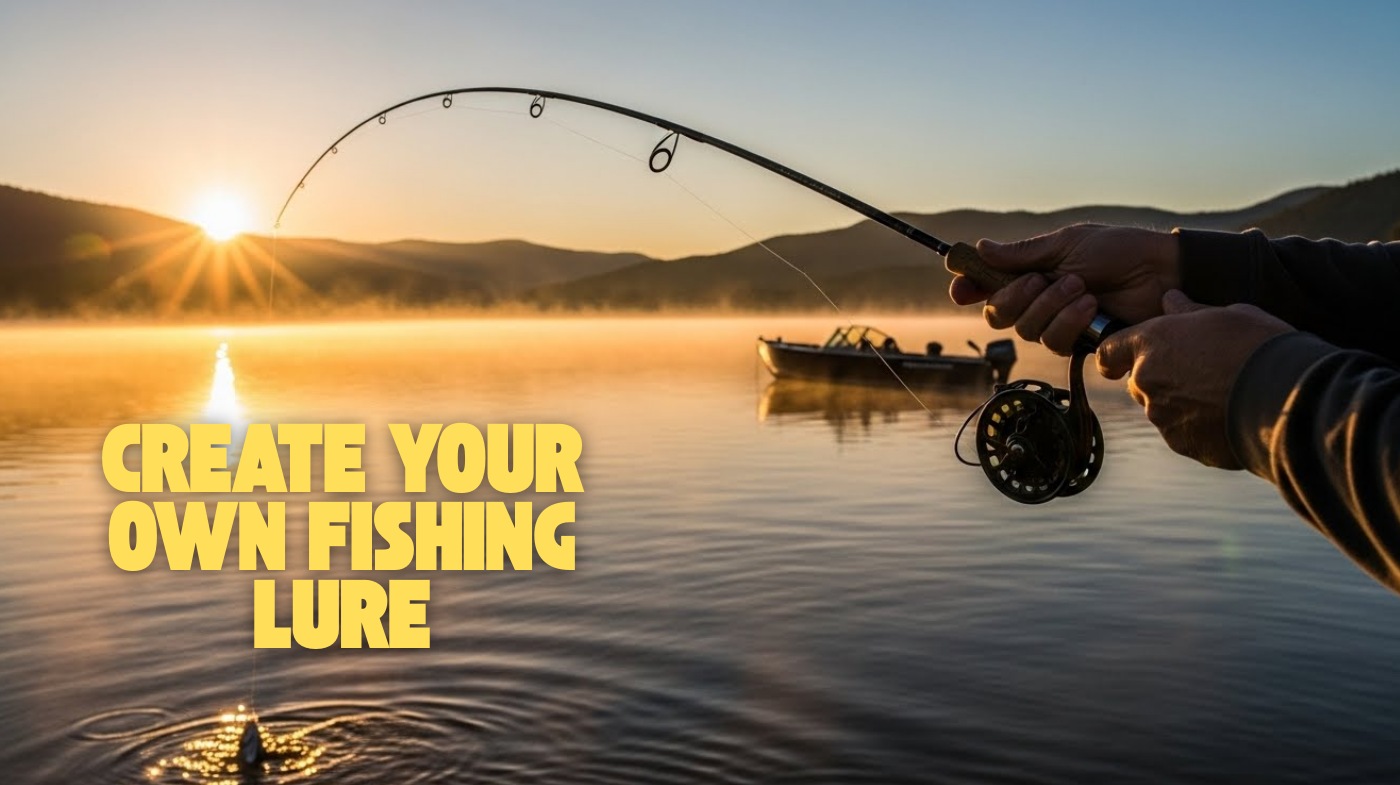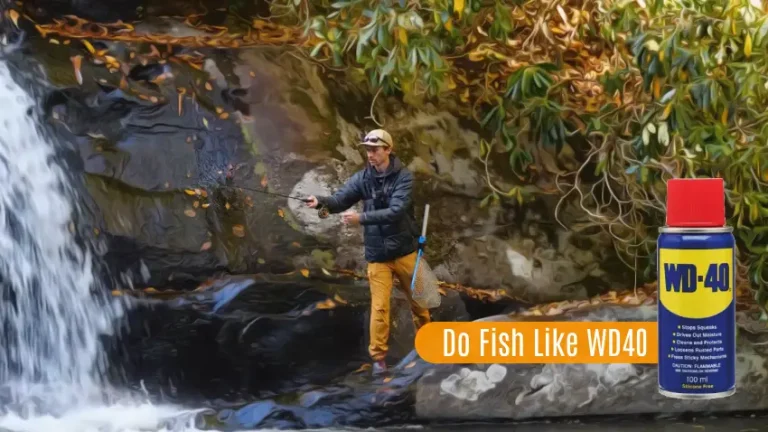Create Your Own Fishing Lure: Eco-Friendly Options That Work
You create your own fishing lure by selecting materials like wood, biodegradable polymers, or plastics. Then shape them with tools such as drills, saws, and sandpaper.
For plastic lures, you can use silicone molds or heat and pour plastisol carefully, controlling temperature to avoid defects. Add hardware like eyelets and hooks, then finish with paints and fish oil-based scents to enhance attraction.
Mastering these steps boosts lure effectiveness and sustainability. Explore further to refine your craft and techniques.
Key Takeaways
- Choose suitable materials like wood, plastic, or biodegradable compounds based on the lure type you want to create.
- Use proper tools such as carving knives, molds, and pliers to shape, smooth, and assemble lure components.
- For plastic lures, control plastisol temperature between 330°F–360°F and use pre-warmed molds to avoid defects.
- Incorporate natural or synthetic scents into lures by applying gels, oils, or sprays to enhance fish attraction.
- Finish lures by sanding, painting, attaching hardware, and ensuring realistic movement and durability in water.
Gathering Materials and Tools
Before you begin crafting your fishing lure, gather all essential materials and tools to guarantee a smooth workflow. Start with selecting wood; poplar boards and 1″x1″ pine pieces are ideal for carving, while 3-mm balsa sheets suit lightweight minnow lures. Choosing the right materials can greatly affect the casting performance of your finished lure.
Begin your fishing lure project by choosing the right wood like poplar, pine, or balsa for ideal carving.
Use a power drill with various bits to create cavities and attachment points. A coping saw and whittling or roofing knives help shape precise profiles.
Secure components and bend wire with pliers or vice grips. Sandpaper in both coarse and fine grits smooths surfaces.
For hardware, collect lead sinkers to melt into plugs, cotter pins for hook hangers, small eyelets for line ties, split rings for treble hooks, and 0.7-mm steel wire for custom hooks.
Additionally, having waterproof superglue on hand ensures durable attachment of small parts like eyes and fins.
Crafting Biodegradable Lures
When crafting biodegradable lures, you’ll work primarily with plant-based polymers, natural rubber, or biopolymer hydrogels that decompose safely in aquatic environments. Selecting materials that offer biodegradability helps ensure minimal environmental impact.
Start by mixing starch- or cellulose-based compounds with water, adjusting viscosity for mold filling. Incorporate fish-attracting additives like garlic or salt directly into the mixture for enhanced scent dispersion. Use reusable mold putty to form your desired lure shapes, ensuring uniform thickness to promote consistent biodegradation. The kit includes nine interchangeable lure parts, such as heads, bodies, and tails, allowing for customization to improve fishing success. Cure the lure at ambient temperature; avoid heat which can degrade natural polymers.
Once hardened, pigments can be added for color customization. Remember, these lures begin breaking down within hours in water, fully decomposing in weeks, minimizing environmental impact and risk to aquatic life.
This process returns nutrients to ecosystems, making your fishing practice sustainable and eco-friendly.
Making Hard Plastic Lures
Crafting hard plastic lures offers a durable alternative to biodegradable options, providing greater longevity and a wide range of design possibilities. Hard plastic lures are known for their durability and resistance to drying out, making them ideal for long-term use. Begin by designing your lure with detailed sketches or 3D models. Many anglers consider the weight variation of their equipment to optimize performance.
Then create a master model from wood, metal, or 3D print for mold making.
Use silicone molds for small-scale casting, ensuring mold quality for sharp detail.
Mix ABS or specialty resins like Fabri-Cast 50 precisely with hardener, adding micro balloons to adjust buoyancy.
Pour the resin slowly into the mold, vibrating it to release air bubbles, and cure for 10–15 minutes.
After demolding, trim excess material, sand edges, and attach hardware securely.
Finish by polishing and painting to enhance realism, ensuring proper balance and defect-free quality for effective swimming action.
Techniques for Soft Plastic Lure Creation
Although soft plastic lure creation requires careful temperature control, mastering plastisol heating is essential for producing consistent, defect-free baits.
Heat plastisol in short 30-second bursts, monitoring with a thermometer to maintain 330°F–360°F. Overheating causes bubbles or material degradation, so patience is key. Use a high-quality digital infrared thermometer to accurately gauge plastisol temperature and prevent overheating.
Choose your mold type; closed molds work best with injection using a syringe-like tool, while open-pour molds suit manual filling, especially for larger lures.
Pre-warm molds to avoid cold cracks or surface defects. Hold injection pressure briefly after filling to ensure full cavity coverage, and add extra plastisol to compensate for cooling shrinkage.
Alternatively, dipping lets you coat cores for layered or translucent effects, allowing multiple dips for thickness.
Maintain warm molds throughout to ensure smooth flow and flawless finishes.
Adding Scents and Finishing Touches
Once you’ve molded your soft plastic lure with care, enhancing its effectiveness through scent application can considerably improve your catch rates.
To maximize attraction, choose strong fish oil-based or synthetic scents that mimic natural prey odors like shrimp or baitfish. Using lures with advanced lens technology can help you better observe fish behavior and improve your fishing strategy.
Apply scents as gels, oils, or sprays, ensuring they adhere well to the porous plastic. Using scent can be the key factor in catching fish that are otherwise unresponsive during bed fishing, turning hesitant fish into aggressive feeders bed fishing effectiveness.
Remember to reapply scent periodically during fishing to maintain potency.
Follow these key steps for best results:
- Dip or rub scented gels onto the lure’s surface for even coverage without altering action.
- Use oils to create a lasting water trail, especially in flowing environments.
- Select scents that mask unnatural odors while triggering predatory responses via amino acid cues.
Frequently Asked Questions
How Do I Store Homemade Lures to Maintain Freshness?
You should store your homemade lures in waterproof, sealable plastic bins or clear tackle boxes with compartments to keep them organized and dry.
Keep soft plastics in their original packaging or airtight containers to preserve scent and prevent drying or cracking.
Avoid direct sunlight and store lures in a cool, dry place with low humidity to prevent warping and rust.
Rinse and dry lures after use, and consider corrosion inhibitors on metal parts for longevity.
Can I Reuse Molds for Multiple Lure Batches?
You can definitely reuse molds for multiple lure batches, but only if you maintain them well.
While high-quality silicone molds like Fusion Molds last longer, neglecting cleaning can cause residue buildup and distort details.
Always wash molds with warm, soapy water, avoid abrasives, and dry completely to prevent warping.
Treat molds periodically with a light canola oil coating to ease release and extend life.
Proper care keeps your molds reliable and your lures consistent.
What Safety Precautions Are Essential When Handling Hot Plastics?
You must wear safety goggles, heat-resistant gloves, and a gas mask rated for plastic fumes to protect against burns and toxic inhalation.
Make certain your workspace has proper ventilation with fume extraction hoods or local exhaust systems.
Monitor temperatures carefully, keeping heating below acrylic melting points (130-140°C).
Keep your area clean, avoid naked flames, and have fire extinguishers nearby.
Allow plastics to cool in ventilated enclosures before handling to prevent injuries and fume exposure.
How Long Do Homemade Lures Typically Last During Fishing?
Homemade lures typically last from a single fishing season up to several years, depending on materials and conditions.
Wooden lures endure years in calm waters but degrade faster with aggressive species.
Soft plastics and rubber lures last months to years if stored sealed to prevent drying.
Applying epoxy coatings and using quality hooks extends lifespan by resisting water, abrasion, and mechanical damage.
Frequent use against toothy fish and weed contact shortens their durability.
Are Biodegradable Lures Environmentally Safe to Use in All Waters?
Biodegradable lures aren’t universally safe in all waters. While they break down faster than plastics, degradation depends on temperature, light, and microbial activity, varying widely across environments.
You’ll find some lures dissolve fully in a few years, but others, especially in cold or low-light waters, degrade much slower.
Take Control of Your Catch: Create Your Own Fishing Lure Today
Creating your own fishing lure blends creativity with precision.
While biodegradable lures connect you with nature’s cycle, hard plastic ones demand exact molding techniques for durability.
Soft plastics offer flexible customization but require patience in shaping.
Adding scents and finishes sharpens your lure’s effectiveness, merging science with artistry.
By mastering these contrasting methods, you gain full control over design and function.
This turns simple materials into tailored, high-performance fishing tools that outmatch store-bought options.






